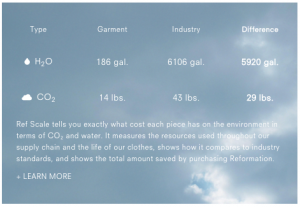For my final blog post, I would like to reflect on our visit to the Brew Creek Centre for the third and final client challenge. This was an incredible way for me to end the course, as the Centre encapsulates the key learning’s that I have taken away from Sustainable Marketing.
Community – The Brew Creek Centre is grounded in a community of people who aim to create a “microcosm of a better world”, as coined by Barclay Isherwood. Each member of the staff work together to help manage, grow, and improve the values and goals of the Brew Creek Centre. Hearing Barclay and Pamela speak to us about the people they work with, care they invest in their employees, and personal growth that has come out of this space was incredible. A personal story that Pamela shared with us was that her brother works a few days of the week at the Centre, and has been able to form positive and close relationships despite personal challenges. In addition, as we walked by the construction crew building a new presentation centre, Barclay stopped to chat and catch up, and Pamela eagerly greeted and hugged a member of the crew whom she had not seen recently. You can truly feel the foundation of community that has arisen from the space. This is such an important factor in creating a sustainable focused business – mobilizing a community of people around core ideas and values.
Collaboration – The Brew Creek Centre works to collaborate with the local community and leaders of sustainability to further their mission. The most outstanding example to me was Barclay’s investment into growing their own food, and sourcing other food products locally through their chef. On the site is a Geodesic Dome that captures heat, enabling plant growth throughout the seasons. It was a highlight to see in person, as it is impossible to describe or understand in photo’s! In addition to working with their chef to make this project happen, they source from local farmers in Pemberton, Whistler and the islands to ensure they are getting sustainably grown produce, and supporting the local economy. This speaks to the idea that sustainability can multiply it’s impact when shared with many people, communities and businesses.
Value Added – While the Brew Creek Centre places a high value on sustainability and the environment, they are first and foremost providing their clients with a high value experience. Walking through their facilities, you can tell that the corporate groups, wedding parties and social ventures are not sacrificing any value or comfort when choosing the Brew Creek Centre. Their air circulation system is seamless, you can barely hear it working, the three pane windows blocked out all the noise from outside (while also helping to insulate the heat of the building), the reclaimed wood they use for some spaces adds aesthetic while still being appropriate for a meeting setting, and all of the water heating systems have back-ups in case the solar heating does not work. Every detail is thought out so that the Brew Creek Centre guests have an experience that enhances their goals for the trip, but also breathes sustainability, community, and care for the environment. In this course we have constantly reiterated that ‘green’ should come second to value.
In conclusion, I am grateful for the opportunity to visit the Centre, I think it was valuable to see all the care that is put into making it such a special space. While I was only able to briefly touch on my takeaways from the visit and tie it back to course concepts, I received a lot of insight into all the hard work and commitment (and funds!) that has to go into an organization with such strong values and ideals.
